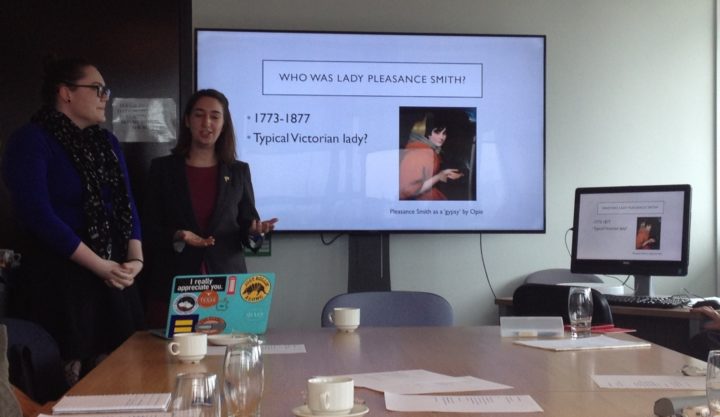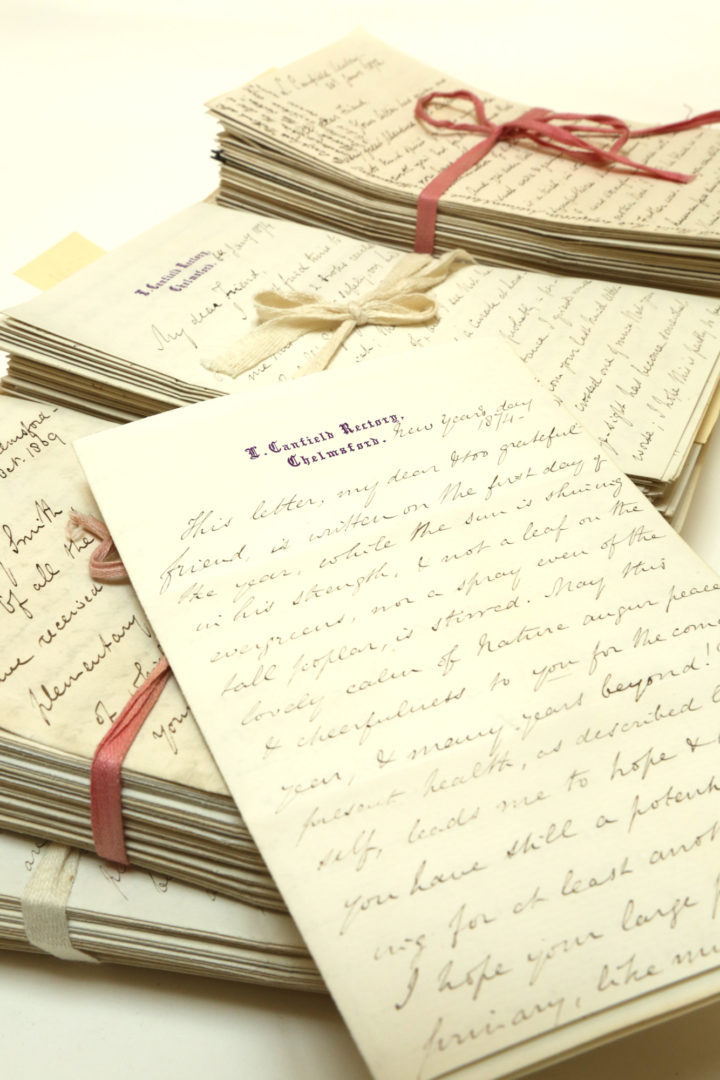Lady Pleasance Smith: a typical Victorian lady?
Published on 18th May 2018
This year, the Linnean Society collaborated with the History department of King's College London, and hosted two Masters students to undertake a 100-hour internship in the Library. The two students, Kristen Wellborn and Taylor Harwood, catalogued different sections of Lady Pleasance Smith's correspondence: while Kristen catalogued Lady Pleasance's general correspondence (over 350 letters from around 100 different correspondents), Taylor focused on the 200-odd letters sent to Lady Pleasance by the Reverend Charles L. Smith (no relation). The two students then collaborated to produce a Linnean Learning podcast, available to listen to on the Linnean Society's website or via SoundCloud. The students were able to present their research and share their experience of working at the Linnean Society at a showcase in Kings College on 11 May.

We were hugely impressed with Kristen's and Taylor's enthusiasm, scholarship and output. The collaboration between the students and between Kings College and the Linnean Society has been immensely enjoyable and fruitful, and we hope to continue to be involved in more internships next year.
Isabelle Charmantier, Deputy Librarian


Lady Pleasance Smith had a sharp intellect and a wide-ranging network of family, friends and acquaintances throughout her long life. She was known for her generosity and philanthropic work. Pleasance outlived her husband James Edward Smith, founder of the Linnean Society of London, by nearly five decades, and from the time of his death in 1828 until her death in 1877 at age 103, Pleasance wrote and received a high volume of letters, many of which reveal her avid interest in the arts, humanities, sciences and the natural world.
As she was not a Fellow of the Society nor a botanist, it would be natural to think that with the passing of her husband her connection to the Linnean Society would have ended, but the high volume of letters that she received indicates the complete opposite. Up to the 1860s, Pleasance remained friends with the Presidents of the Society and donated books, specimens and even some of her husband’s letters to the Society. Being the wife of James Edward Smith afforded Pleasance the opportunity to broaden her horizons intellectually and break the mould of the commonly portrayed narrative of a domestic Victorian lady.

Writing letters was a vital part of everyday life in Victorian times. It was the best way to quickly pass on important news and conversation. Although the letters penned by her are missing, by reading through this collection consisting of over 550 surviving letters from almost 100 different correspondents, we are able to take a glimpse into the past and piece together a picture of who Lady Pleasance Smith was.
Taylor Harwood and Kristen Wellborn
